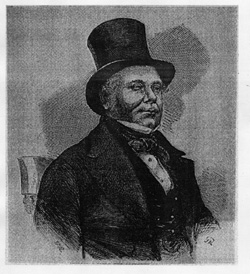Charles Frederick Field
Charles Frederick Field, 1805-1871(?), was one of the first members of the Detective Division of Scotland Yard, which he led from 1846 to 1852, and also an acquaintance of Charles Dickens, who used him as a model for the character of Inspector Bucket in his novel Bleak House.
Field began his career with the Metropolitan Police of London in 1829 as a sergeant in "E" Division; in 1833 he was promoted to inspector and transferred to "L" Division; in 1842 he became one of the first officers assigned to the newly-created Detective Division under Inspector Nicholas Pierce. In 1851, he was credited with the apprehension of Charles Gill, who was charged with threatening the life of Lord John Russell. That same year, he appeared as title character in Dickens's bit of Victorian journalism-verité, "On Duty With Inspector Field". He at one point served in a private capacity for Dickens, providing security for a performance of Edward Bulwer-Lytton's play "Not So Bad as We Seem", which was threatened with disruption by Lord Lytton's estranged wife Rosina.
In December of 1852, Field retired, and opened a Private Inquiry bureau; according to some reports, Dickens subscribed £300 to a testimonial. In 1853, he worked as a private investigator for the insurance companies involved with the notorious case of William Palmer, the "Rugeley Poisoner." Cited by the Commissioner for allowing the press to use his former title of "Inspector", his pension was briefly suspended in 1861, but was restored in 1862 after he assured the Home Secretary that he would not allow it to happen again.
